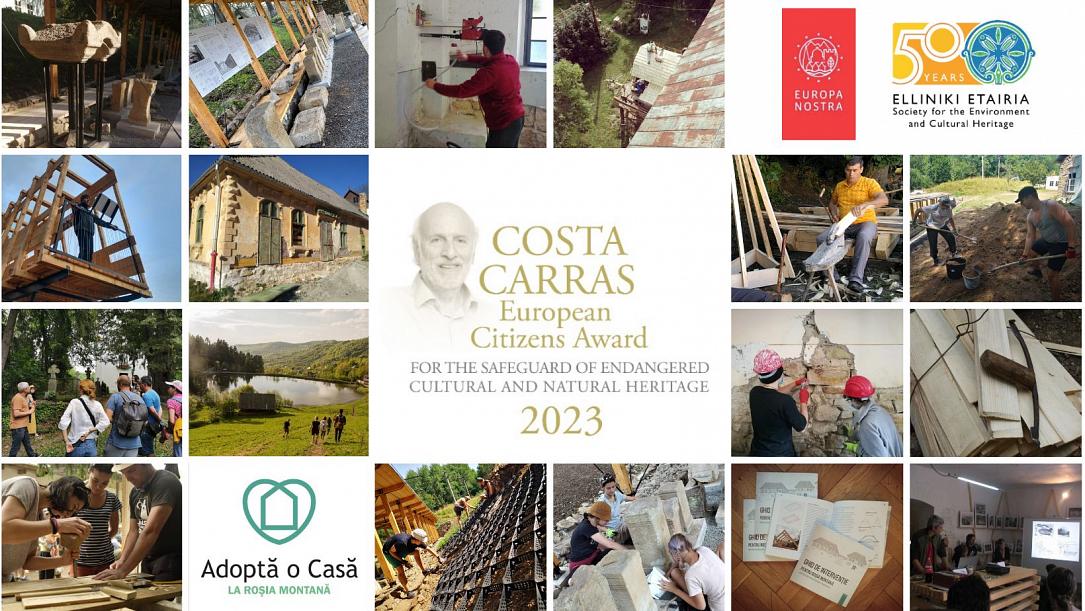Romanian conservationist NGO ARA given first Costa Carras European Citizens Award



Romanian NGO “ARA – Architecture. Restoration. Archeology” was awarded the very first Costa Carras European Citizens Award for the Safeguard of Endangered Cultural and Natural Heritage for its exemplary work mobilizing citizens to promote and protect the heritage of Roșia Montană, located in Transylvania.
The award was instituted this year by EUROPA NOSTRA and ELLINIKI ETAIRIA – Society for the Environment and Cultural Heritage in memory of Costa Carras, an iconic champion of the protection of the environment and cultural heritage in Greece and in Europe. The award is also backed by A.G. Leventis Foundation, the Delphi Economic Forum, and the European Investment Bank Institute.
The jury unanimously and enthusiastically agreed on the first winner.
Established in 2006, ARA “has played a decisive role in coordinating the campaign to protect Roșia Montană with its endangered cultural heritage and landscape. With very modest financial means, but with huge mobilization of dedicated volunteers – locally, nationally, and internationally – they managed to convince the Romanian authorities to prioritize a heritage-led sustainable development and to successfully submit the application for the inclusion of Roșia Montană‘s historic mining landscape on UNESCO’s World Heritage List. Their expert and courageous work is truly exemplary and gives inspiration to citizens across Europe to take strong ownership of their cultural and natural heritage and to engage in their safeguard,” the press release states.
“It is a great privilege for us that the first award honoring the memory of Costa Carras, one of the most important champions of European heritage, goes to Roșia Montană, which he knew and appreciated, and for the conservation of which he fought with perseverance,” ARA representatives said.
The award ceremony will take place within the framework of the Delphi Economic Forum on April 26 in Delphi in the presence of H.E. the President of the Hellenic Republic Katerina Sakellaropoulou.
Situated in the western area of the Carpathian Mountains, the landscape of Roşia Montană has been gradually transformed by gold and silver mining, from prehistoric surface works to deep underground galleries, continued in medieval and modern times, up to the 1970s. For centuries, the settlers coming from various parts of Europe created communities of an interesting cultural diversity, to mention only the 5 denominations (Catholic, Orthodox, Greek Catholic, Unitarian, and Calvinist), whose churches and houses are still witnesses of their way of life.
A large-scale open-cast mining project was to be underway in Roşia Montană until citizens, NGOs, and European and international organizations protested. Instead, they advocated for a sustainable, long-term development project based on the special characteristics of the area.
Roşia Montană is today considered one of the most representative mining landscapes in Europe. The site as a whole and 50 of its components are listed as historic monuments and two geological formations as natural monuments.
In 2021, the historic mining landscape of Roșia Montană was simultaneously inscribed on UNESCO’s World Heritage List and on the List of World Heritage in Danger.
(Photo source: Adoptă o Casă la Roşia Montană on Facebook)